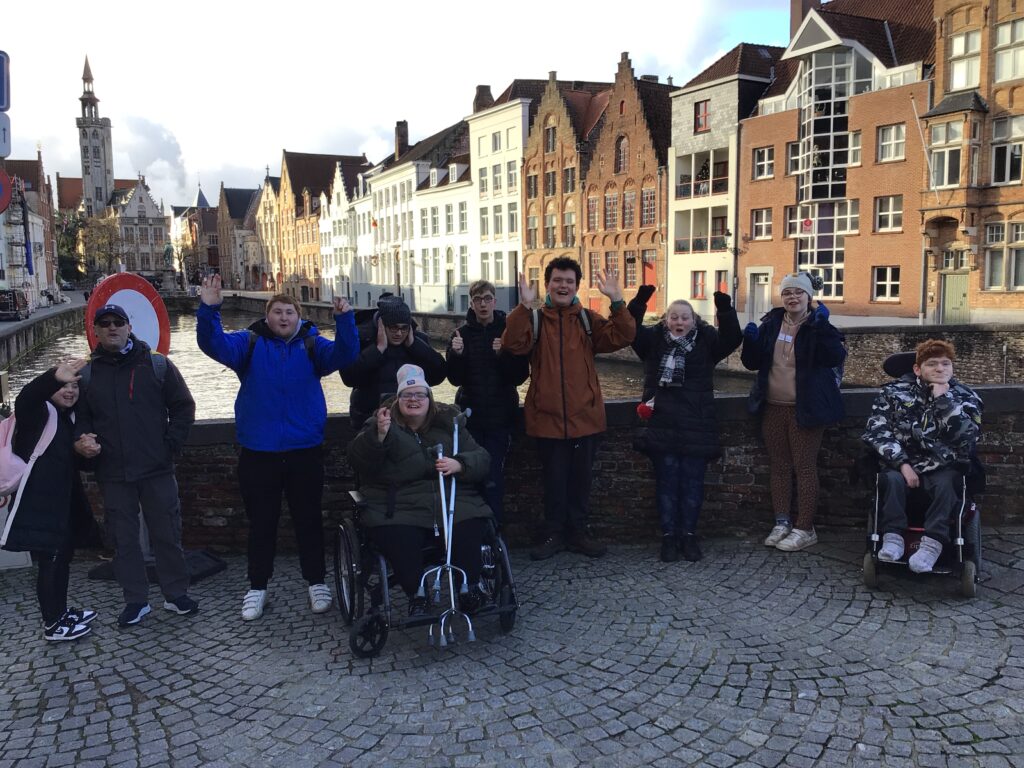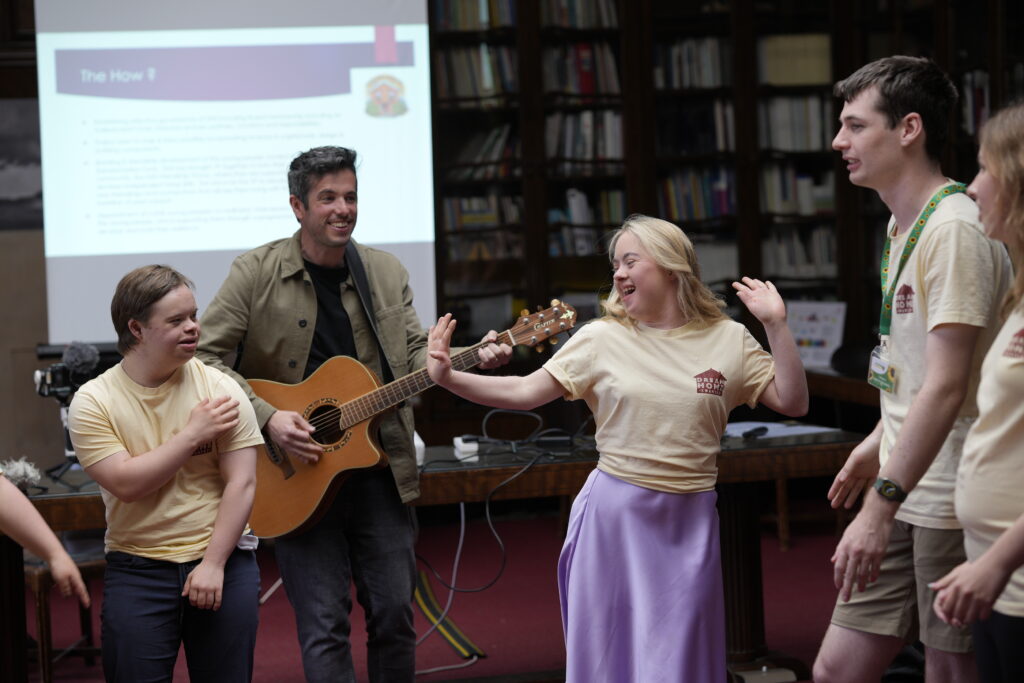Paul Frame looks back at the life of Richard Price, a largely forgotten son of Wales
Readers of books on the eighteenth century enlightenment could be forgiven for thinking that while members of the ‘English’ and ‘Scottish’ Enlightenments were actively pursuing parliamentary reform, religious and civil liberty and new ideas of social justice the Welsh had simply slipped into a sort of Winkle-esque slumber.
This limited view of Wales’s contribution to the Enlightenment raises two questions. Is it accurate and, if it is not, how might we reveal the true picture to the general public both inside and outside Wales. That the view is inaccurate can be demonstrated by a cursory look at the life of the one person who usually rates a brief mention in the more enlightened of Enlightenment histories.
Richard Price was born on the 25 February 1723 at Tynton, a still extant Cadw-listed farmhouse in the village of Llangeinor near Bridgend. As the third child of his Calvinist father’s second marriage, Richard received his early education at dissenter academies in Wales before moving to London in 1740. There he became a dissenting minister, married Sarah Blundell in 1757 and eventually settled in Newington Green.
Price entered public life in 1758 with the publication of A Review of the Principal Questions and Difficulties in Morals. In this he asserted our intuitive understanding of right from wrong and our predisposition to virtue. This was an argument that prefigured the categorical imperative of Emanuel Kant by more than thirty years. Price also tried to live by the moral precepts of his philosophy, though not always successfully. These precepts included an adherence to virtue, candour, usefulness, benevolence, reason and toleration and a belief in free will.
As part of his devotion to ‘usefulness’ Price often edited and sometimes contributed to the work of his friends and acquaintances including Joseph Priestley, John Howard the prison reformer and the economist Adam Smith. In 1764, on behalf of his deceased friend Thomas Bayes, Price edited and published a mathematical work on probability and the Doctrine of Chances. This contained a theorem described by Prof. G. A. Barnard in 1958 as ‘one of the most famous in the world’. It was for this work, and for his mathematical publications on probability, that Price was elected a Fellow of the Royal Society in 1765.
Stemming from his interest in probability was Price’s passion for demography and the creation of the mathematically complex tables of mortality used in the then burgeoning business of annuities and life assurance. These included his famous Northampton Tables that were used for over 50 years by the forerunner of today’s Equitable Life. Price acted as an unpaid advisor to the Equitable for about 15 years and during this time his nephew, William Morgan of Bridgend, was installed as the societies actuary. Under Morgan’s 55-year tenure as actuary the Equitable became one of the world’s largest financial institutions. Price himself is now regarded as one of the founders of modern life assurance and the first to show how a life office should be run. Ironic, then, that when the Equitable Life finally ran into difficulties in the early years of the 21st Century it was partly because it ignored advice given by Price over 200 years earlier.
Price summarized his thinking on finance in Observations on Reversionary Payments published in 1771, a book described by his closest friend, Benjamin Franklin, as “the foremost production of human understanding that this century has afforded us”. At the same time Price involved himself in various campaigns aimed at establishing old age pensions and friendly societies in Britain, although all these efforts were defeated in Parliament. Nevertheless, they provided a spur to Price’s parallel campaign for parliamentary reform.
One notable success in financial matters came in 1786 with the establishment of a sinking fund for the redemption of the national debt. On this issue Price met with William Pitt the Younger at Downing Street, and Pitt, As both Prime Minister and Chancellor, Pitt requested Price to submit his ideas for such a fund. The final scheme was modelled on Price’s third plan, the least attractive according to Price.
As one of the few British voices to publicly support the American Revolution from start to finish, in February 1776 Price published Observations on the Nature of Civil Liberty, a defence of the rebel colonists. This sold more than 60,000 copies within a year. In language and sentiment it was very reminiscent of Jefferson’s later Declaration of Independence. The pamphlet was welcomed in America and reprinted throughout the thirteen colonies. Members of the American Congress distributed it amongst themselves and it was read by the likes of Jefferson, Franklin and Adams. A French writer on Price, Henri Laboucheix has even suggested that it may have been under the influence of Price’s thinking that Franklin (or Jefferson) changed, “We hold these truths to be sacred and undeniable” in the draft independence declaration to the now famous phrase “we hold these truths to be self evident”. It is, of course, a conjecture but one that illustrates the influence some writers think Price had at this time.
Additional Observations, Price’s second pamphlet on America, appeared in 1777 and his final offering, Observations on the Importance of the American Revolution and the means of making it a benefit to the world, in 1784. In the latter Price urged the Americans to strengthen their federal union, to guard against an unequal distribution of property, and to abolish slavery as quickly as humanly possible. Slave owner George Washington wrote welcoming the pamphlet and Thomas Jefferson sent a letter of reassurance when Price face criticism from South Carolina and Georgia over his property distribution and slavery admonitions.
Often watched and ‘abused’ at home during the war of independence Price was lauded by many in America. In October 1778 the US Congress invited him to move to the United States and to become a citizen and their financial advisor. Price courteously declined on account of his age and settled ways. In sole company with George Washington he was awarded a degree by Yale University in 1781, and he became a member of the American Academy of Arts and Science in Boston and the American Philosophical Society in Philadelphia.
When revolution erupted in France in 1789 George Cadogan Morgan, another of Price’s nephews, was in Paris watching the fall of the Bastille. Morgan kept his uncle informed of the developing situation, as did Thomas Jefferson who wrote frequently from Paris. Price welcomed the events in a public sermon in November 1789, later published as A Discourse on the Love of our Country. It was this that induced Edmund Burke to write his Reflections on the Revolution in France, in opposition to Price’s ‘wicked principles’. Price made a short reply to Burke’s attack but he was now too old and frail to enter into a long dispute. Instead, Tom Paine in his Rights of Man and Mary Wollstonecraft in A Vindication of the Rights of Man rose to his defense.
Price returned home to Wales almost every year to stay at Southerndown, on the coast in the Vale of Glamorgan. There he recuperated from his hectic London life by sea swimming, cliff climbing, horse riding and walking. In 1790 he made his last visit and stayed longer than usual. After his return to London his health failed and he died at Hackney on 19 April 1791 at the age of 68. His request for a quiet funeral was overridden and the cortège to his burial in London’s Bunhill Fields comprised 30 gentlemen’s coaches and 20 of family and friends. From France many of the new revolutionary societies expressed their sorrow at the passing of a man they dubbed the ‘Apostle of Liberty’.
As one of the most celebrated men in London, Price’s contemporaries were convinced of his lasting fame but this proved not to be. A combination of Burke’s rhetoric, the Terror in France and Pitt’s clampdown on reformist activity effectively removed Price’s name from the accepted Enlightenment pantheon.
How, then, might we restore it? Our small indigenous media means that any attempt to enlighten sleepy Wales as to its Enlightenment history will need an imaginative response through the Internet, the National Museum and the museum at Saint Fagans. At the National Museum this process has begun with the opening of galleries dedicated to exploring the contribution of eighteenth century Welsh artists. A bigger challenge is at St Fagan’s. With its new designation as the National History Museum it now has responsibility for telling the entire history of the nation. This task, and the space it requires, is obviously large and it may be time for Saint Fagan’s to think of developing offsite facilities. We should consider a centre dedicated to interpreting the Welsh Enlightenment with links established to interested parties abroad such as the historical and Welsh societies of America, particularly Pennsylvania where many Welsh people made their mark in the eighteenth century.
The aim would not be not to idolize Welsh enlightenment figures but to show how the debates and issues of their time inform many of those of today. The life of Price provides many avenues that might be explored in this way.
An exploration of slavery, for example, might begin with his pamphlet condemnation of the trade before moving on to the contribution of other Welshmen. Men such as Morgan John Rhys who, having fled to America in 1794, campaigned vigorously on the issue and even tried to help establish a black church in Savannah, Georgia from where Price had received his greatest criticism.
From there we might wend our way via Price’s relatives in America who fought in the civil war and shared rooms with Abraham Lincoln, to the era of modern civil rights. We might end on the Welsh Window at the 16th Street Church in Birmingham, Alabama where Martin Luther King regularly preached. Created after a public subscription in Wales by artist John Petts and depicting a crucified Negro Christ, the window was presented to the bombed Church in 1965. To round off we might end by asking why is it so many descendants of Negro slaves appear to have Welsh sounding surnames?
As a campaigner for pensions and social welfare, Price also prefigures the later activism in Wales that culminated in the achievements of Lloyd George, Aneurin Bevan and Jim Griffiths. This story that might have been told in Bevan’s house in Tredegar had it not been demolished.
Fortunately Richard Price’s home at Tyn-ton still survives. Should this property come on to the market Cadw, St Fagan’s and other interested subscribers should surely combine to purchase it for the nation and establish it as an Enlightenment Centre in Llangeinor. The village is a gateway to the south Wales valleys and provides a link into the 18th Century industrial history of Blaenafon and the nineteenth century coal industry, as well as to the continuation within Wales of the political and social campaigns Price had fought in a century or two earlier.
As a boy in Tyn-ton Price was once discovered reading a book disapproved of by his father who then grabbed the work and threw it into the fire. Clearly Price started early on the road that led to the freedom of thought and intellectual curiosity that marked his later life. As Wales is now actively on the road of nation building, and since it is from the Enlightenment and the ideas of people like Price that many of our modern ideas of nationhood spring, Price’s home in Tyn-ton would be a good place for us to learn about and wake up to our changing national reality.






Sut mae Mr Frame! First may I congratulate you on your most noteworthy undertaking! Opportune and highly commendable!
There were indeed many Welsh and Welsh -English Enlightenment Cymro’s in all professions ranging from Mathematicians, inventors, astronomers, literary practitioners and visionaries etc. This though Sir, will be an address to the ‘Guardians’ of the Welsh Nation; those who may be the ‘unaccountables’.
Croeso to all “conciencious accountable” Cymroes and Cymraes as well as internationl friends! The limited view of Wales’s contribution to the Enlightenment is down to one thing, as conciencious, Welsh historian, Sir Frederick Rees once said, many Cymro-moons ago; ‘Welsh historians have played minor part in fostering national sentiment in Wales’ in his ‘The Problem of Wales and other Essays’; 1963 (Uni Wales Press)
I have to tell you now that in the year two thousand and eleven, on the thirteen of August, in World-Welsh-Time that very little has changed. The young of Wales still await and schizophrenia’s children become further entrenched in the backwardness of Welsh unaccountabilty regarding highlighting the memory of our beautiful, yet much abused past achievers. An article was sent to the new editor of Wales National Newspaper in 2000 with a clarion call for a ‘New Moral, Cultural and Educational Wales’. No surprise that the article was not printed then? Perhaps if it had been, this impassioned plea from a mere Welsh peasant, maybe, a slim maybe, may have inaugurated a Revolution in at least one of these directions, preferably Education. No such undertaking has taken place since that so significant time in Welsh history. The year was two thousand.
For the last 20 years I have felt pretty much alone in accumulating the achievers of Wales as well as those of Welsh descent. Importantly as someone who advoctes the World-Wide Welsh vision I have freely distributed my learnings and my ‘World Welsh Achievers’ throughout the World in-order that in my life and my missions work I can help shape this nation by dignifying it with the ‘Greats’ and ‘Icons of Wales’.
The title ‘Greats of Wales’ was chosen over 20 years ago, since as a result of the self-inflicted Welsh Genocide of unaccoutable academics as well as educationalists to highlighting grave-ridden achievers I had to bring dignity to our uncelebrated declaring them as ‘Great’. This would make up for much lost time in bringing credence and beauty to their powerful yet ash-boned lives Dr Richard Price I feel would be ashamed of us as a people in the failure to record the dignity of beautiful Welsh souls’ lives. This he would identify with much of the substandard social vices which cake Welsh society throughout it’s strata.
One more time, the Welsh Formula is a simple one: History + Knowledge = Empowerment + Accountability + Duty = Ambassadors for Wales
The Academi of Cymro Genius, the Hall of Fame of Welsh Achievers is paramount to guide and empower a new generation, an accountable generation to the appallingly neglected Welsh representation of Wales’ sons and daughters of eminence. I am glad that the work on http://www.GreatsofWales.com has inspired some; World Welsh Month (History of Icons) may have spawned Welsh History Month, The Academi of Welsh Genius becomes a National Science Museum for Wales and the call for the wholescale introduction of plagues to commemorate our past heroes has touched a nerve with the Academi of Writers to name but a few.
Once again, I remind you that we are the sleeping giants of all small world nations and the un-rounded national mindset is one which surely needs circling. The knowledge of the pasts’ role models and their achievements will shape a new more Welsh Accountable Mindset; characteristics such as flippancy, choleric-natured and very easy to criticise and condemn can be nurtured and streamlined if you wish to revolutionise the educational system and education of the ‘Greats of Wales’;
Those poor, abused and defenceless Welsh and World-Welsh souls humbly beseech thee to free their souls and minds and caress the minds of this first generation of Welsh children, …I feel sure I remain perturbed with the ‘guardians’ of Welsh nationhood and identity. On a beautiful note, congratulations to you Mr. Frame on embarking on a most noteworthy venture in recording the mind of an exceptional Cymro. D.O Thomas would, I feel sure, be very proud that his life’s dedication to the Beautiful and Brilliant mind that was Dr Richard Price has not gone in vein.; Ap Reece, Preece, Pryce, sorry Price was indeed the most brilliant-beautiful mind to come out of Cymru
May I announce to the World of Wales and Wales specifically, that my doors remain open for my World -Welsh -First pioneering presentations, e.g; The ‘Greats of Wales’ Contribution to
Electricity,
Computing,
Science,
Invention,
Philosophy
Water!…..Welsh Water
(We’ll skip that one…..yeah!?)
etc………
The Welsh Schools of all subjects awash my soul and await the day that Academics and the Guardians of Wales have the enlightenment to reach out after 20 years of abject neglect and assist me in bringing true nationhood-dignity to this generation of children, their generation and their generation, generations…
We all have a duty to such……do we not…..?
If you wish to contact me, …my doors have always been open; [email protected]
your humble and most obedient servant
Dr Richard Price
(lol!)
Neil Ap Jones
(a mere Cymro peasant just passing through)